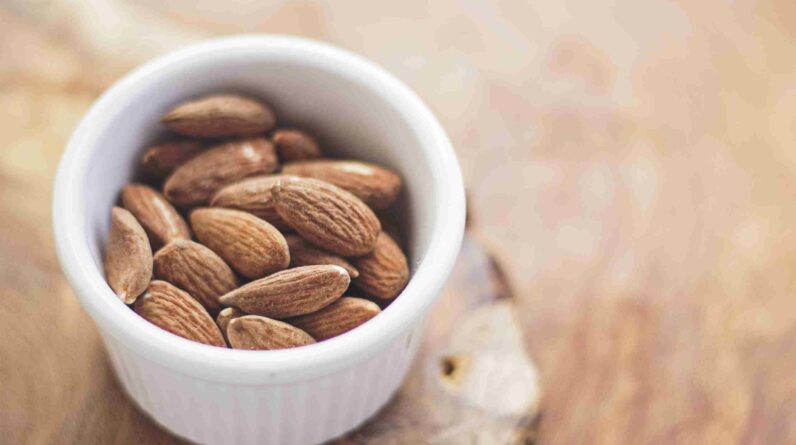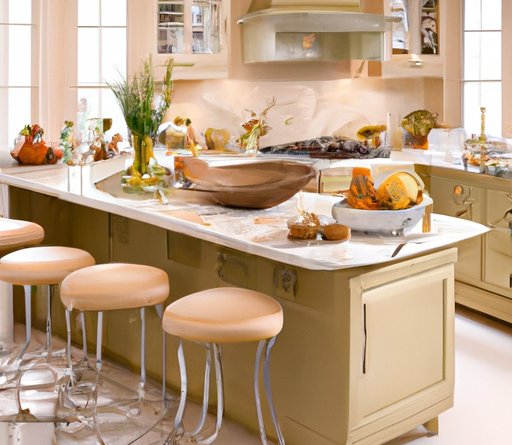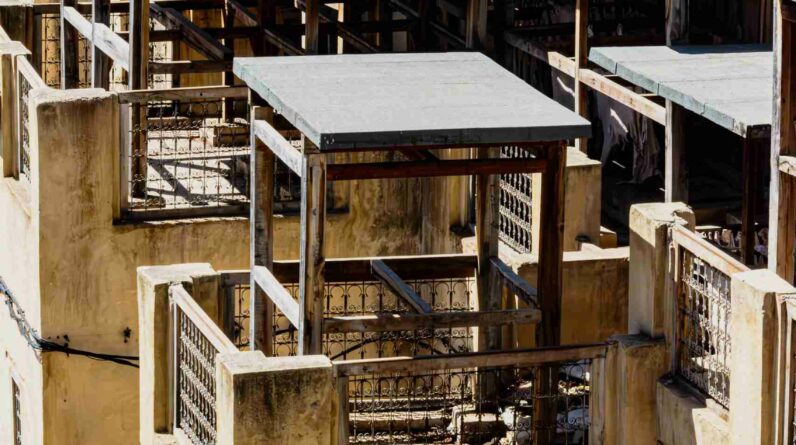Are you tired of the dated look of your kitchen cabinets? Yearning for a fresh and modern makeover? Well, we’ve got exciting news for you! The answer to your design dilemma lies in the power of repainting or refinishing your kitchen cabinets. Yes, you read that right! With a little bit of creativity and DIY magic, you can transform your cabinets from drab to fab, giving your kitchen a whole new lease on life. So say goodbye to those outdated cabinets and get ready to unlock the potential of your kitchen with a simple and cost-effective solution. Buckle up, because we’re about to take you on a journey of stunning transformations and showcase the endless possibilities that await. Don’t miss out on this captivating guide that will change the way you look at your kitchen cabinets forever.

Can Kitchen Cabinets Be Repainted Or Refinished?
When it comes to updating the look of our kitchen, one of the biggest focal points is often the cabinets. They take up a significant amount of space and play a central role in the overall design of the room. However, replacing kitchen cabinets can be a costly and time-consuming endeavor. Fortunately, there is a more budget-friendly alternative: repainting or refinishing the cabinets. In this article, we will explore the steps and considerations involved in repainting or refinishing kitchen cabinets, as well as alternative options and cost considerations.
Preparation
Before diving into the painting or refinishing process, proper preparation is essential. This ensures that the end result is smooth, durable, and aesthetically pleasing. The preparation stage involves cleaning and removing hardware, sanding the cabinets, and filling and repairing any imperfections.
Cleaning and Removing Hardware
The first step in preparing kitchen cabinets for repainting or refinishing is to clean them thoroughly. This removes any dirt, grease, or grime that may be present on the surface. It is best to use a mild cleanser and warm water for this task. After cleaning, the hardware such as hinges, knobs, and handles should be removed. This makes it easier to complete the subsequent steps without getting paint or finish on the hardware.
Sanding the Cabinets
Once the cabinets are clean and the hardware has been removed, the next step is to sand the cabinets. Sanding helps to remove the existing finish, creates a smooth surface for the new paint or finish to adhere to, and helps to minimize any imperfections. It is recommended to use a medium-grit sandpaper or sanding block for this task. Sand in the direction of the wood grain, taking care to sand all areas evenly. After sanding, wipe away any dust using a damp cloth.
Filling and Repairing Imperfections
After sanding, it is common to find imperfections such as small holes, dents, or scratches on the cabinets. Before painting or finishing, these imperfections should be filled and repaired. Wood filler or putty can be used to fill in small holes or dents. Once the filler is dry, sand the area again to ensure a smooth surface. For larger holes and scratches, it may be necessary to use a wood patch or epoxy. After the repairs are complete, sand any filled areas again to blend them with the rest of the cabinet surface.
Choosing the Right Paint or Finish
Once the cabinets are properly prepared, it is important to choose the right paint or finish for the desired outcome. Different types of paints and finishes offer different benefits and levels of durability.
Types of Paints for Kitchen Cabinets
There are various types of paints to choose from when repainting kitchen cabinets. Latex paint is a popular choice due to its ease of use, quick drying time, and ability to clean up with water. Oil-based paint, although more durable, has a longer drying time and requires mineral spirits for cleanup. Another option is milk paint, which provides a vintage or distressed look. It is important to consider factors such as durability, ease of application, and desired finish when selecting the paint type.
Types of Finishes for Kitchen Cabinets
Finishes play a crucial role in protecting the cabinets and enhancing their appearance. Clear coats, such as polyurethane or lacquer, provide a durable and glossy finish. Satin or semi-gloss finishes offer a more subtle sheen and can help to mask imperfections. For a more natural look, stains are a popular choice. They enhance the natural beauty of the wood while providing protection against wear and tear. The choice of finish should be based on personal preference and the desired outcome.
Considerations for Choosing the Right Paint or Finish
When selecting the paint or finish for kitchen cabinets, several factors should be considered. Firstly, the durability of the paint or finish is important, as kitchen cabinets are subject to heavy use and may be exposed to moisture or heat. Secondly, the desired aesthetics, such as color or sheen, should align with the overall kitchen design. Lastly, the ease of application and maintenance should be taken into account, especially for those who prefer a DIY approach.

Painting Kitchen Cabinets
After proper preparation and selecting the paint or finish, it is time to start painting the kitchen cabinets. This process involves priming the cabinets, applying the paint, and using techniques to achieve a professional finish.
Priming the Cabinets
Priming the cabinets is a crucial step in ensuring proper adhesion and long-lasting results. A primer provides a stable base for the paint to adhere to, increases durability, and helps to prevent stains or discoloration. Use a primer specifically designed for use on kitchen cabinets, and apply it evenly using a brush or roller. Allow the primer to dry completely before moving on to the next step.
Applying the Paint
Once the primer is dry, it is time to apply the paint. Start by selecting a high-quality paintbrush or roller that is suitable for the chosen paint type. Apply the paint using smooth and even strokes, going with the grain of the wood. Multiple thin coats are generally better than one thick coat, as they provide better coverage and a smoother finish. Allow each coat to dry completely before applying the next.
Techniques for Achieving a Professional Finish
Achieving a professional-looking finish requires attention to detail and some helpful techniques. One technique is called “feathering,” which involves blending the edges of each stroke while painting. This helps to achieve a smooth and seamless finish. Another technique is “tip-toeing,” where the brush or roller is lifted slightly at the end of each stroke to avoid leaving marks. Additionally, always check for any drips or runs and smooth them out immediately. Patience and taking the time to do each step properly will result in a beautiful, professional finish.
Refinishing Kitchen Cabinets
In addition to repainting, refinishing kitchen cabinets is another option to consider. This process involves stripping the cabinets of their existing finish, applying a new finish, and potentially staining or using other refinishing techniques.
Stripping the Cabinets
Stripping the cabinets is necessary when the existing finish is in poor condition, or when a completely new look is desired. This involves using a chemical stripper or sanding to remove the old finish. Follow the manufacturer’s instructions when using chemical strippers, ensuring proper ventilation and safety precautions. Sanding can also be used to strip the finish, but it requires more effort and time. After stripping, the cabinets should be thoroughly cleaned and sanded to prepare for the new finish.
Applying a New Finish
Once the cabinets are stripped and prepared, it is time to apply a new finish. This can be done using a brush, roller, or sprayer, depending on the desired outcome and personal preference. Apply the finish evenly, following the manufacturer’s instructions for drying time and any additional steps. Multiple thin coats are usually recommended for a more durable and even finish. Allow each coat to dry completely before applying the next.
Staining or Refinishing Techniques
If a different color or look is desired, staining or other refinishing techniques can be applied after stripping and before applying the new finish. Staining adds color to the wood while maintaining its natural beauty. It is important to choose a stain that complements the overall design of the kitchen. Other refinishing techniques, such as distressing or glazing, can also be used to create a unique and customized look. Experimentation and careful application will ensure a stunning result.
Alternative Options
While repainting or refinishing kitchen cabinets can be a cost-effective and transformative solution, there are alternative options to consider.
Cabinet Refacing
Cabinet refacing involves replacing the doors and drawer fronts while keeping the existing cabinet boxes. This offers a way to update the appearance of the cabinets without the need for a complete replacement. Refacing allows for a wide range of new door styles, finishes, and hardware options. This can be a more affordable option compared to replacing all the cabinets and may be a suitable choice if the existing cabinets are in good condition.
Cabinet Replacement
For those seeking a drastic change in the kitchen design or who have cabinets that are worn or damaged beyond repair, cabinet replacement may be the best option. This involves removing the existing cabinets and installing new ones. While this option provides the most flexibility in terms of design, it is also the most expensive and time-consuming. This option is recommended for homeowners who are planning a full kitchen renovation and have the budget for it.
Cost Considerations
One of the primary factors that influence the decision to repaint or refinish kitchen cabinets is the cost. Several cost considerations come into play when comparing DIY versus professional options.
DIY Cost vs. Professional Cost
Repainting or refinishing kitchen cabinets as a DIY project can save a significant amount of money compared to hiring professionals. The cost of DIY materials, such as sandpaper, paint, primer, and brushes, is generally much lower than the cost of professional services. However, it is important to keep in mind the value of time and effort required for DIY projects, as well as the potential for mistakes or the need to invest in additional tools.
Hiring professionals for repainting or refinishing kitchen cabinets typically involves a higher upfront cost but can provide added benefits. Professionals bring expertise and experience to the project, ensuring high-quality results and saving time and hassle. Additionally, some professionals offer warranties or guarantees on their work, providing peace of mind.
Additional Cost Factors to Consider
In addition to the cost of materials and labor, there are other factors that can impact the overall cost of repainting or refinishing kitchen cabinets. These factors include the size of the kitchen, the number of cabinets, the complexity of the design or style, and any additional customization or refinishing techniques. It is important to consider these factors when budgeting for the project and obtaining quotes from professionals.
Pros of Repainting or Refinishing
Repainting or refinishing kitchen cabinets offers several advantages that make it a popular choice among homeowners.
Cost-Effective
Repainting or refinishing kitchen cabinets is a cost-effective solution compared to replacing them entirely. It allows for a significant transformation of the kitchen without breaking the bank. By repurposing existing cabinets, homeowners can allocate their budget towards other areas of the kitchen renovation.
Updated Appearance
One of the main reasons for repainting or refinishing kitchen cabinets is to update their appearance. This can breathe new life into a tired or outdated kitchen, making it feel fresh, modern, and in line with current design trends. With a wide range of paint colors and finishes available, homeowners have the opportunity to personalize the look of their cabinets and create a space that reflects their taste and style.
Enhances Overall Kitchen Design
Repainting or refinishing kitchen cabinets can have a significant impact on the overall design of the kitchen. It can tie together different elements, such as countertops, backsplashes, and flooring, creating a cohesive and visually pleasing space. By choosing the right paint color or finish, homeowners can enhance the architectural details of the cabinets and create a focal point in the kitchen.
Cons of Repainting or Refinishing
While repainting or refinishing kitchen cabinets has many benefits, there are some drawbacks to consider.
Time-Consuming
Repainting or refinishing kitchen cabinets is a time-consuming process, especially when done as a DIY project. It requires several steps, including preparation, painting or refinishing, and allowing sufficient drying time between coats. Patience and attention to detail are required to achieve a professional finish. Homeowners who are short on time or have a tight deadline for their kitchen renovation may find this process challenging.
May Require Regular Maintenance
Kitchen cabinets that have been repainted or refinished may require regular maintenance to keep them looking their best. Depending on the chosen paint or finish, cabinets may need periodic touch-ups or reapplication. Additionally, proper care and cleaning techniques should be used to protect the painted or finished surface from damage. Homeowners should be prepared to invest time and effort in maintaining the appearance of their repainted or refinished cabinets.
Limited Options for Drastically Changing Cabinet Style
While repainting or refinishing kitchen cabinets can update their appearance, it may not be the best solution for homeowners who want to completely change the style or layout of their cabinets. Repainting or refinishing can only do so much to alter the basic structure and design of the cabinets. For those seeking a complete transformation, other options such as cabinet replacement or refacing may be more suitable.
Conclusion
Repainting or refinishing kitchen cabinets offers a cost-effective way to update the look of the kitchen without the need for a complete replacement. By following the proper steps of cleaning, sanding, and repairing imperfections, homeowners can create a smooth and durable surface for the paint or finish to adhere to. Choosing the right paint or finish, considering factors such as durability, aesthetics, and ease of application, is essential for achieving the desired outcome. Painting or refinishing kitchen cabinets requires attention to detail and the use of proper techniques to achieve a professional finish. It is also important to consider alternative options such as cabinet refacing or replacement, as well as the cost considerations associated with each. While there are some drawbacks to repainting or refinishing, such as the time-consuming process and potential maintenance requirements, the cost-effectiveness, updated appearance, and enhanced overall kitchen design make it a favorable choice for many homeowners. So, if you’re looking for a budget-friendly way to transform your kitchen, repainting or refinishing the cabinets is definitely worth considering.










